Feature
Open Innovation Challenge to Mitigate Global Warming
Connected Science Learning September–October 2023 (Volume 5, Issue 5)
By Gillian M. Puttick, Brian Drayton, and Santiago Gasca
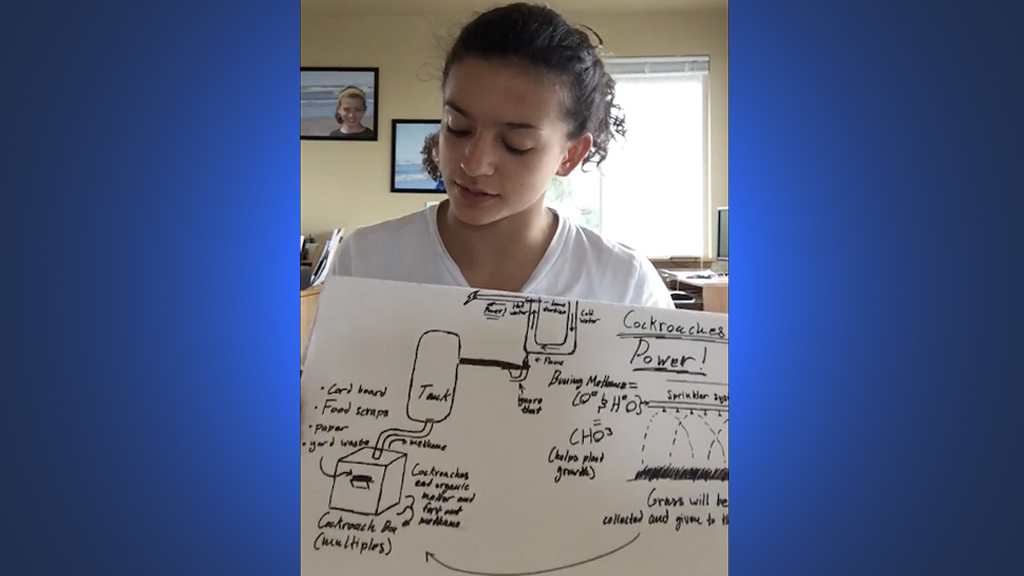
The purpose of science competitions or science fairs in STEM education is to provide students with opportunities to experience and practice science as it is practiced and experienced in the real world. A Framework for K–12 Science Education argues that the principal aim of science is to create and critique evidence-based causal accounts of natural phenomena (NRC 2012). To support this, the Next Generation Science Standards have outlined “science practices” as a guide for reproducing authentic science learning in the classroom (NGSS Lead States 2013). Further, the Frameworks suggests that science progresses through discourse within the community of scientists and thus emphasize that students should learn to communicate and argue about information and findings "clearly and persuasively" (NRC 2012 p. 53). How can authentic science experiences be supported in classrooms?
Over several years in the Innovate to Mitigate project, we at TERC (an independent research-based non-profit organization) have hosted open innovation challenges nationally for young people ages 13–18 to develop methods for mitigating global climate change. Past submissions have included projects in a wide range of domains (e.g., energy conservation, alternative energy generation, agricultural methods, or social/behavioral change; Table 1).
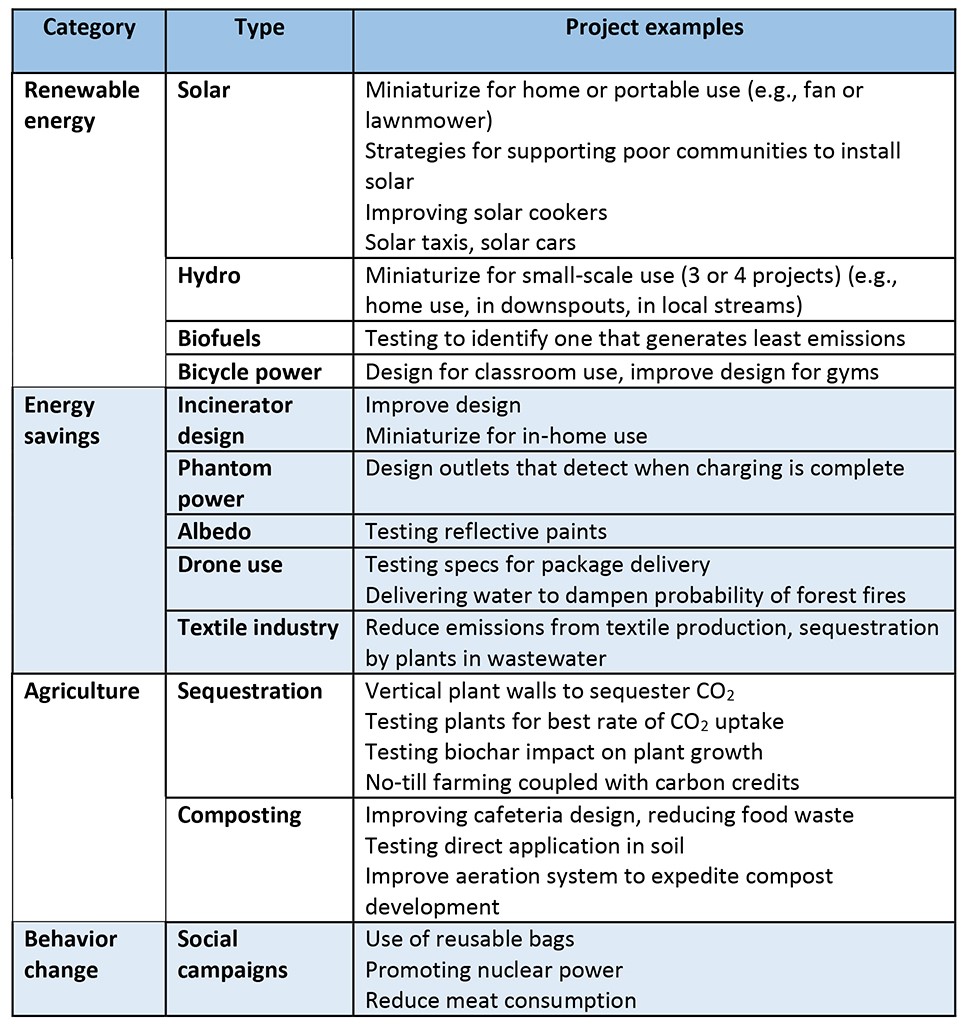
A Novel Competition Environment
The Innovate to Mitigate challenge environment has several novel features. It is structured as a collaborative problem-solving environment to engage a broad diversity of participants as they work in teams in an open-ended, goal-oriented way while competing for prizes in the end (Puttick, Drayton, and Gasca 2022; Puttick, Drayton, and Drayton 2017; Drayton and Puttick 2018). We expand upon these below and illustrate them with findings from interviews of students and teachers in Florida, Maryland, and Ohio. Other data include results from a pre/post survey on science practices and descriptions of innovations submitted by students.
Collaborative competition
After brainstorming a possible mitigation strategy, student teams write an abstract that describes their idea, why they consider it an innovation, and how feasible it might be to implement. They use a rubric to guide their abstract since their abstracts scaffold the whole investigation (Table 2).
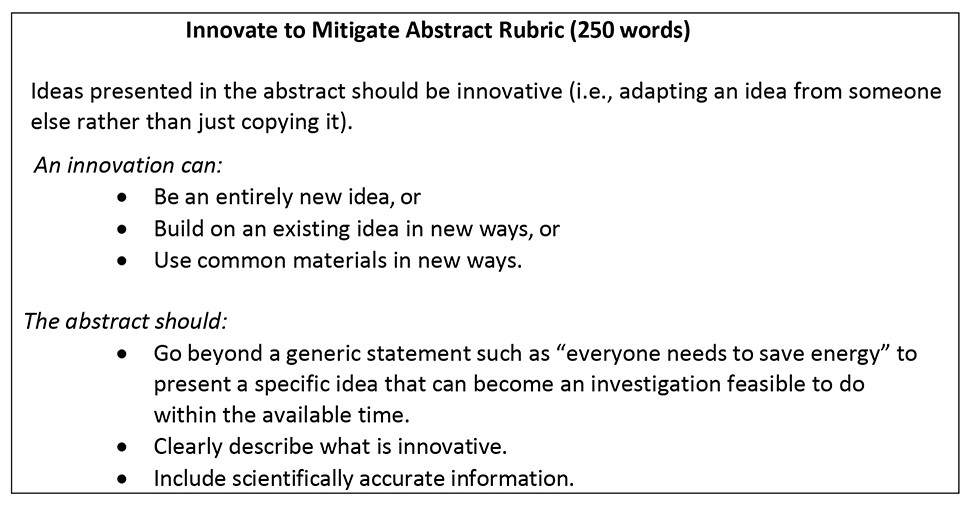
Teams post their abstract to the project's online community forum for crowdsourced discussion. All students and TERC scientists post questions and comments to which designers respond, and often a dialog ensues (Puttick et al. 2022; Drayton, Puttick, and Gasca 2022). After two weeks of discussion, teams post revised abstracts, using comments, questions, and suggestions they’ve received from peers and scientists to improve their designs. Terry, a 12th-grade student, told us,
…it felt less like competition and more just, "oh everyone's just trying to help each other out like they can," it was a really good community thing.
Teams develop a project over several weeks, guided by their teacher. They post final videos and papers to an online forum where all the students participating in the competition can comment, as can the judges. Each team can reply to these comments or questions. Points are awarded for participation in the discussions as well as for quality of submissions.
Constructionist learning
Innovate to Mitigate is a constructionist environment. The term constructionism refers to how learners acquire skills and knowledge through having agency in choosing projects and in building public artifacts (Papert and Harel 1991; Tangney et al. 2020). Having complete agency in choosing projects means that students can innovate, exercise imagination, and take initiative. Ana, a 12th-grade student, shared,
I really love how this competition fostered the right environment for me to try my hand at developing my own experiment. Innovate to Mitigate gave me the reason and the setup to get that started … that kind of thing was really exciting, so I liked learning about that and taking the initiative on my own. We're kind of given the freedom to do whatever solution we thought would work and, just research something new. I liked Innovate to Mitigate encouraging youth to find solutions and conduct experiments that were innovative.
In 2022 students completed a pre/post assessment of science practices that included items assessing six of the eight practices as defined by the NGSS (asking questions (for science) and defining problems (for engineering), developing and using models, planning and carrying out investigations, analyzing and interpreting data, constructing explanations (for science) and designing solutions (for engineering), engaging in argument from evidence, obtaining, evaluating, and communicating information). Pre/post results from a sample of 19 students from whom we have complete data (out of a total of 39 respondents) showed a significant increase in knowledge of experimental design and designing solutions, learning how to construct evidence-based explanations, and analyzing and interpreting data (sign test, p = 0.01, n = 19).
The work of two eighth-grade teams—the FOCIS and Blue teams (Figures 1 and 2)—exemplifies the kind of innovative thinking that the competition has fostered. Team FOCIS used a parabolic reflector to focus energy on organic matter confined in the oxygen-poor environment of discarded solar tubes. This created biochar, a stable form of charcoal that can enrich soil carbon and sequester it. The Blue team used birdhouses to test different formulations of paint to maximize reflection of solar energy, reasoning that generating CO2 from air-conditioning would be reduced.
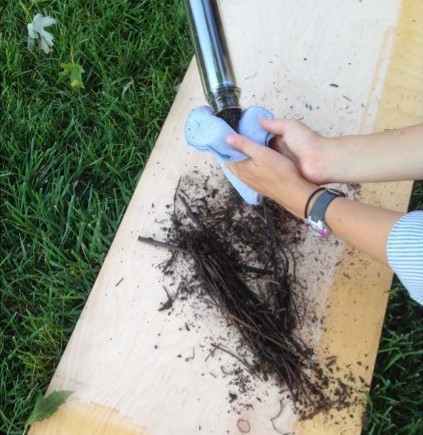
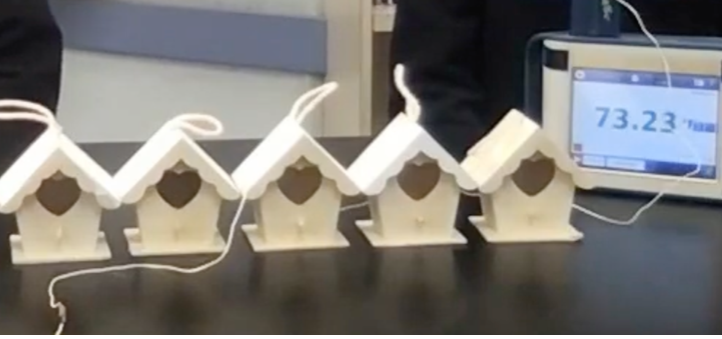
Finally, in addition to learning science content (specifically about climate change and mitigation) and science communication, students have experiences that are not always included in school-based science learning experiences yet have long been understood in the philosophy of science as essential elements of successful inquiry. We find that students learn the productive value of failure and the use of rhetoric.
Productive talk
In the online discussion forum, students and judges discuss and critique the submissions. “Crowdsourcing” in this way supports students to iteratively improve design ideas and STEM knowledge (Puttick et al. 2022; 2023). That is, sensemaking through dialog and collaboration is central. This strong focus on discourse also provides students with the opportunity to develop robust understanding of how scientific explanations are constructed through making claims supported by evidence and reasoning (Michaels et al. 2008).
Many Innovate to Mitigate students value the peer critique process and made use of the critiques to improve their designs (Puttick et al. 2022). For example, Terry, a 12th-grade student, told us,
…[we] were able to siphon some ideas from other groups—maybe we'd like the way that they were taking their data or maybe we just liked some of the projects in general. I found it very nice that they could call it on ours, and we can be like, “Oh, maybe we should think about this.”…So it was those ideas that really, I guess they kind of improved our project.
Even more important, students have commented on the value—and challenge—of commenting on others’ work. Evaluating the proposed claim and argument and deciding about the extent to which other students’ designs are innovative and feasible requires critical reading. In some instances, students have done research on others’ projects to be able to position themselves to make meaningful comments and pose deeply constructive questions about their claims. For example, Will said in his team’s interview,
We tried to get as technical as possible but also what was reasonable … had to google to be able to give them good feedback because I didn’t want to say the same thing that others were saying ... Reading their abstract, their comments, and feedback they got, we also learned from feedback that the others got too.
Teacher collaboration
Participating teachers may come from different disciplinary backgrounds. The project provides three virtual meetings so that teachers are oriented to the project’s goals, particularly with respect to science practices. Teachers also have an opportunity to share approaches and teaching tips, as well as problem solve as their students grapple with often unfamiliar science or, more generally, with constructionist pedagogy.
Affordances and Challenges for Teachers
In a constructionist environment, students have agency in choosing projects (Papert and Harel 1991; Tangney et al. 2020). This means that the teacher’s role is necessarily transformed, which brings both benefits and challenges.
Affordances
The positive affordances for teachers include flexibility in the learning context and suitability for interdisciplinary collaborations. The Innovate to Mitigate structure has been implemented both in formal classrooms—as an elective or part of a unit—and in out-of-school settings (e.g., in science clubs). In addition, it has supported the participation not only of science teachers, but also language arts and mathematics teachers. For example, Ms. Staples, a literacy teacher described starting off drawing on her area of strength, “We came at it from the angle of reading and research to inform our experimentation […] reading about lots of different climate-related challenges really helped them with the project design.” She also talked about her excitement in this changed role, “That was very exciting because I didn't know either what would happen if we put white paint with different amounts of calcium carbonate on a roof.” A mathematics teacher, Ms. Rotham, commenting on the model of student participation in the competition, said, “that was something I was pretty comfortable talking to them about as a math teacher, and what's your data tell you...”
Challenges
The many affordances of a constructionist environment necessarily lead to challenges for the teachers, too. One challenge that many Innovate to Mitigate teachers have described centers on the need to cede control (Puttick, Drayton, and Karp 2015), a common challenge in any constructionist environment (e.g., Tangney et al. 2020). Ms. Hayter’s comment was representative, “[The competition was] very much hands-off. So that was a bit of a change for me where it's not on giving them as many instructions.” Another challenge is not being an expert in an area that students are investigating. For example, being a literacy teacher, Ms. Staples reported, “I spent quite a bit of time studying so that I could help them understand the chemistry or the physics.”
Students also needed support in aspects of the science practices (specifically working with scientific data) and constructing arguments. For example, for her eighth-grade students, Ms. Hayter created a template that provided a structure for their data-gathering activities. Furthermore, students needed to understand how to use data to build a persuasive scientific argument. For example, Ms. Rotham reported that she pushed her students to collect data from the prototype they were building to substantiate their claim; it was insufficient to make what Sandoval and Millwood (2008) call a “factual claim”—a claim asserted as fact but without evidence to support it. Ms. Schaaf observed of her students, “[it was] a little bit of a learning curve for them, because I don't think they're used to defending their arguments.”
How to Support NGSS Practices Through Authentic Science Experiences
The Innovate to Mitigate learning environment is carefully designed to support students to work together on a meaningful and authentic science challenge. We provided clear expectations and guidelines for submissions, and for productive talk, and found an online platform that supported these activities. Any of these elements can be integrated into your practice using the following tips:
1. Find a topic that is meaningful and authentic. Examples include attention to students’ own environment, whether it be the physical environment of the school, “greening” school operations, or an issue in the wider community. Environmental conservation or restoration can also engage students, as can actions related to climate change, human health, or environmental justice.
2. Find collaborators. To create a larger context than a single classroom for students to exchange and discuss their projects, classroom teachers will need to find collaborators. Teachers may identify someone in their own school with whom to collaborate. In that case, they could identify a context in which student discourse across their respective classrooms might be productive. For example, if students are currently working on a project related to habitat restoration in an ecology unit, could a discussion with students in a civics class provide a way to (1) introduce a fresh perspective on a topic, or (2) help students see the relevance of and connections across these disciplines? In the Innovate to Mitigate project, we found that students provided productive critiques and questioning even though the teams were working on very different topics (Puttick et al. 2022; 2017; Drayton et al. 2022).
Perhaps an energizing conversation at an NSTA conference suggests a potential collaborator at another school. If teachers share goals about engaging students in science practices—critical thinking about an argument, what counts as evidence, how to evaluate evidence in support of a claim, etc.—they might consider supporting student dialog across their schools.
3. Set clear expectations and provide guidelines. Besides helping students define a question or problem that can feasibly be investigated—for which many “how-to” resources already exist—be clear about what expectations you have as teacher. For example,
- Share ground rules/community norms for working on teams and for constructive community discussion.
- Set expectations for participation (e.g., all students must post at least X comments on others’ work and must respond to all comments on their own work).
- Allow enough time and set reasonable deadlines (e.g., if online discussions are asynchronous, students will need enough time to consider their questions for others—and may need to do research to pose questions—and will need time to reflect on how they will use critiques from others to improve their own projects).
4. Teach and model talk moves. A powerful strategy that emphasizes collaborative knowledge building among students is a mode of discourse known as “productive talk.” It emphasizes teachers’ use and facilitation of "talk moves" (Table 3). Talk moves are designed to help students discuss claims, reason about and with data, and evaluate the data as evidence for or against their claims. Not only does this kind of discourse improve the depth and quality of student argumentation, but it also increases students’ capacity to evaluate their own reasoning (Puttick et al. 2022). Research has shown that student uptake of productive talk moves generally only increases after the moves have been modeled in the classroom by a teacher (Michaels and O’Connor 2021), yet this type of discourse emerged without coaching in the Innovate to Mitigate community discussions.
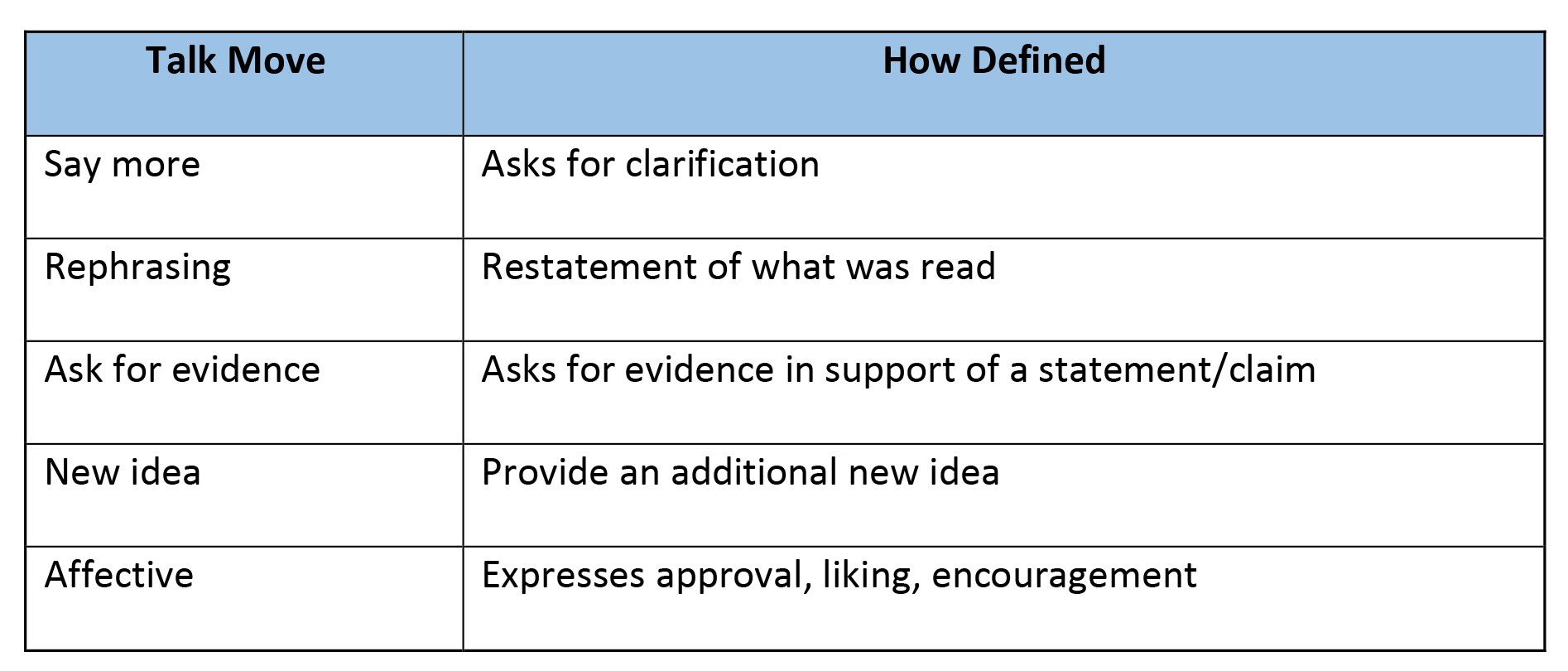
In addition to improving student ideas, students' web-mediated discourse can provide the teacher with insight into student reasoning and their understanding of STEM concepts and practices (Drayton et al. 2022).
Teachers who orchestrate productive talk in their classroom focus on four key moves. They help all students to
- share and clarify their reasoning,
- carefully listen to one another,
- dig deeper by focusing on evidence, and
- really work with their classmates’ ideas.
“Talk moves” (Table 3) are the tools all these teachers use to achieve these outcomes.
5. Identify types of reasoning. Sandoval and Millwood (2008) have extended the NGSS definition of science inquiry to explore the quality of student reasoning when they construct explanations using scientific argumentation. They recommend that, if students are to undertake significant science investigations, they should be better able to analyze what their peers are really saying/writing by identifying the types of reasoning that have been used (Table 4).
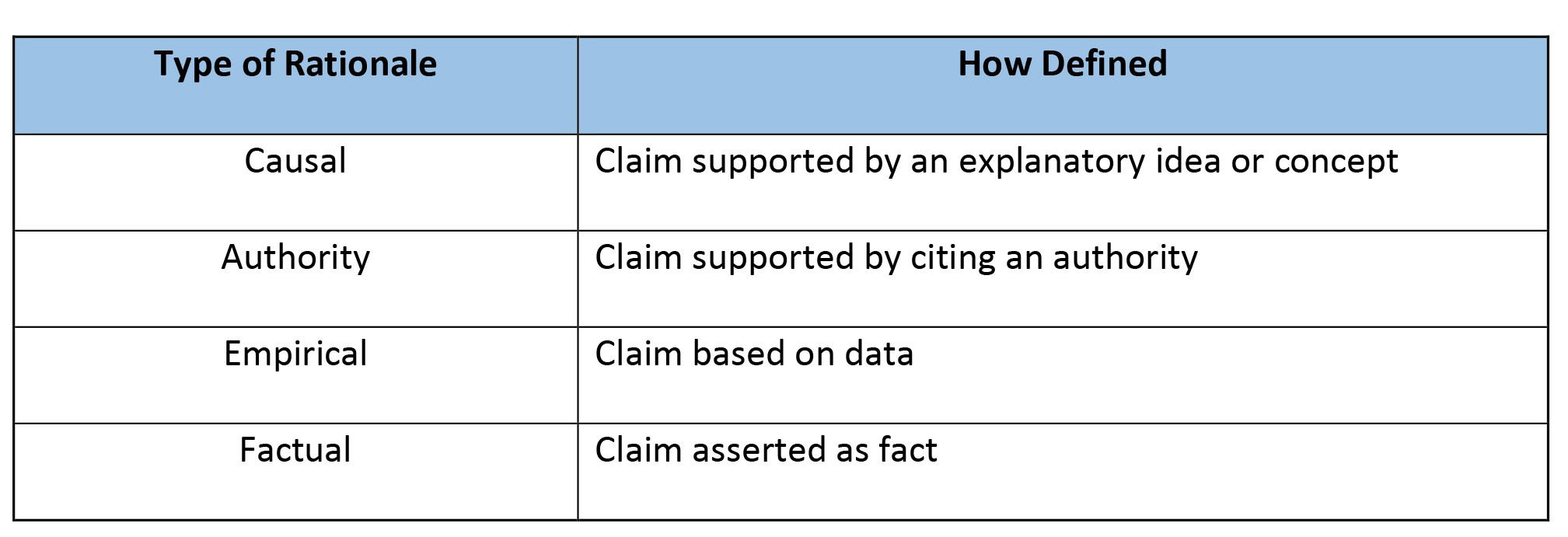
6. Find a platform. Learning management systems (LMS) have proliferated in the past decade or so. Teachers can choose one that best suits the purpose of posting student work online for student discussion. For example, Google Classroom provides several simple formats that could be used for asynchronous discussions, such as having student teams post Google Docs that others then comment on, or setting up a Google Sheet with team names on the first page and links to a separate tab for each team where students post their work. Others can then review and post comments. For more formal student collaboration (e.g., across classrooms or involving another school), any application that allows threaded discussion (Canvas, Instagram, Reddit) can be used.
One teacher whose teams participated in the Innovate to Mitigate competition told us that it was easy to structure regular class time for students to go online for discussion, for example,
That's something that you can very easily say, Okay, we're gonna take 45 minutes right now, read through the message boards and make some comments, because that's very cut and dry, and you can do that even if your own project is not at the same level or whatever it might be.
Closing
Framing learning goals for science fairs and science competitions around phenomena that are meaningful to young people offers the opportunity to make direct connections to relevant science and to understand how science is useful in society. The suggestions above offer multiple ways for teachers to support students in learning and effectively using the science practices. Carefully designed competition environments can reveal students as effective problem-solvers, unleash their imaginations, and help them innovate.
Acknowledgment
This study is based upon work supported by the National Science Foundation under Grant #11908117. Any opinions, findings, and conclusions or recommendations are those of the authors and do not necessarily reflect the views of the National Science Foundation.
Supplemental materials
Innovate to Mitigate project website: innovatetomitigate.org
Innovate to Mitigate project student video submissions: https://www.terc.edu/innovatetomitigate/student-submissions/
Innovate to Mitigate project promotional 3-minute video: https://www.youtube.com/watch?v=i4Xvkd_E33oandt=2s
Innovate to Mitigate project publications accessible online:
https://www.terc.edu/wp-content/uploads/2022/03/ISLS-Crowdsourcing-2022-proceedings.pdf
Gillian M. Puttick (gilly_puttick@terc.edu) is a senior scientist, Brian Drayton is a center co-director, and Santiago Gasca is a researcher, all at TERC in Cambridge, Massachusetts.
Climate Change Inquiry Interdisciplinary Science and Engineering Practices Teaching Strategies High School Informal Education


